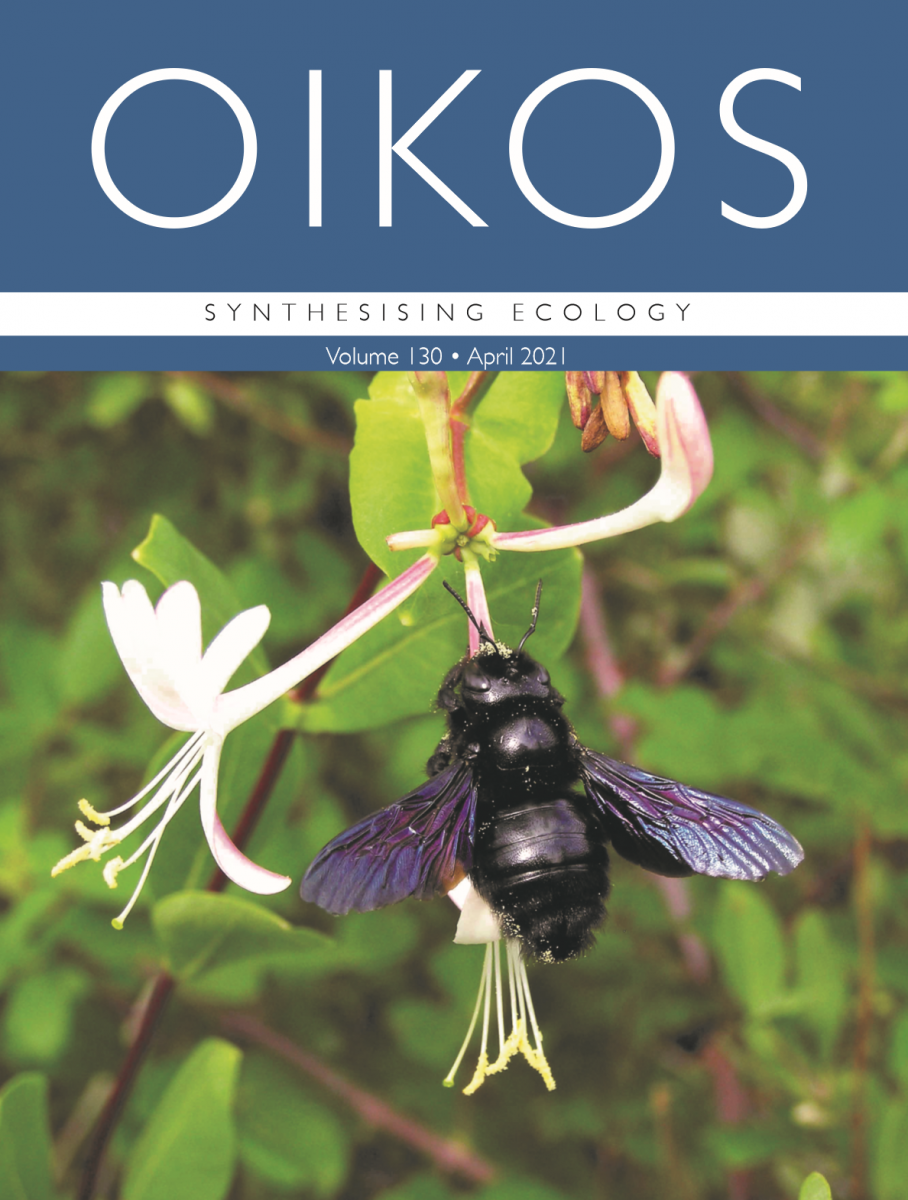Cover April
Submitted by editor on 7 April 2021. Get the paper!
Get the paper! Spring is here and the pollinators are hard at work! This month's cover portrays a carpenter bee (Xylocopa violacea) pollinating the flowers of the honeysuckle (Lonicera etrusca) while behaving as a nectar robber.
Spring is here and the pollinators are hard at work! This month's cover portrays a carpenter bee (Xylocopa violacea) pollinating the flowers of the honeysuckle (Lonicera etrusca) while behaving as a nectar robber.
They are the study species for "Nectar robbing and plant reproduction: an interplay of positive and negative effects" by Rojas-Nossa et al. 2021
Abstract
Nectar robbers are animals that extract nectar through holes made in floral tissues. This behaviour has a wide spectrum of consequences for the plant that range from negative, to neutral, to positive according to life history traits of the interacting organisms and the ecological mechanisms involved. Lonicera etrusca has long tubular flowers producing large quantities of nectar and undergoing high levels of nectar robbing. Despite this, robbing seems to have neutral effects on the reproduction of the species. The aim of this work is to understand why this pollinator‐dependent plant is not affected by an interaction that is commonly detrimental for plants. To achieve this goal we try to answer two questions: 1) do nectar robbers deposit suitable pollen for plant reproduction after a visit? And, 2) is the visitation rate of legitimate visitors affected by nectar robbing? We experimentally studied the details of the reproductive compatibility system of the plant and compared pollen tube growth after single visits of the main nectar robbers. We made observations on plants of three populations to study the effect of robbers on the visitation rates of legitimate foragers. The results revealed that nectar robbers effectively perform cross‐pollination. Visitation rates of legitimate visitors are reduced by nectar robbing. The net neutral effect observed for L. etrusca is the result of two processes: on one side the direct positive effect of nectar robbers acting as pollinators, and on the other, a negative indirect effect caused by the decrease in visitation rates of legitimate visitors. Since the number of ovules in this species is low, both legitimate visitors and robbers contribute to an efficient cross‐pollination. This example illustrates how neutral effects for the plant can arise as the final result of a complex interaction between plants, legitimate visitors and robbers.
Photo by Sandra Rojas Nossa
